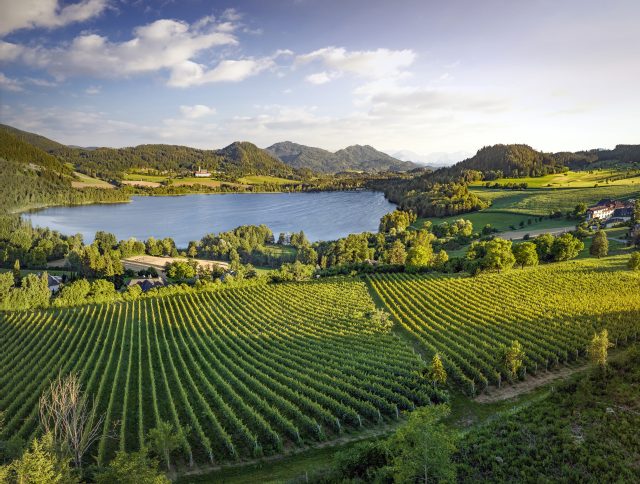This website uses cookies so that we can provide you with the best user experience possible. Cookie information is stored in your browser and performs functions such as recognising you when you return to our website and helping our team to understand which sections of the website you find most interesting and useful.
Austrian producers celebrate strong 2022 vintage
Despite the challenges posed by an unusually dry summer during last year’s growing season, producers from across Austria are expecting big things from the 2022 vintage.

2022 was a year that could have turned out rather worse than it did. The potentially devastating effects of late frosts on vineyards was mitigated by late budding, and fears that the drought in July and August was going to significantly dent yields were quashed thanks to late-August rainfall, before the main harvest.
While typically, precipitation so late in the game is not necessarily welcomed by winemakers, in this case it provided the trigger for a final burst of ripening, resulting in well-balanced white wines and reds with velvety tannins. Across Austria an above average volume was achieved (2.5 million hectolitres, as opposed to 2.4mhl).
As for sweet wines, by Lake Neusiedl, conditions were suitable for high yields of high quality Botrytised wines. And, before Christmas, in Niederösterreich and Burgenland there was sufficient frost for eiswein production (though volumes were low, quality was high).
Niederösterreich
The 2022 wines will have slightly less acidity, due to the summer heat, but should have enough to be balance the primary characteristics. The Grüner Veltliner has slightly less of its classic ‘peppery’/rotundone aroma, but, like the Riesling, Pinot Blanc and Pinot Noir, still good varietal typicity. Aromatic varieties, such as Sauvignon Blanc, Muskateller and Traminer, also showed well.
Burgenland
db visited Burgenland in September and heard about the optimism of producers in Neusiedlersee DAC for a “very special” vintage. Since then, it has emerged that for the whites, Chardonnay and Pinot Blanc did very well, with clearly discernible primary characteristics. For the reds, including Sankt Laurent, Blaufränkisch and, the crossing of the two, Zweigelt, the wines are powerful, dense, well-structured and, thanks to the hot weather, have well-developed tannins.
Steiermark
After a short harvest period that concluded in September (unprecedented for the region), the region’s flagship variety of Sauvignon Blanc fared particularly well. High must weights for white wines, also including Gelber Muskateller, Morillon (Chardonnay), Pinot Blanc and Welschriesling, ensured that the wines have aromatic intensity, strength and structure.
Vienna
Grapes grown on the outskirts of the Austrian capital displayed good sugar ripeness but lower acidity than usual. The Rieslings are notably fruit-forward and will be ready to drink a tad earlier than in recent years.
Bergland
Rain in early September meant that the harvest was slightly delayed. Though the humid conditions could have caused issues with powdery and downy mildew, the shift towards PIWI (fungus-resistant) varieties, such as Donauriesling and Cabernet Blanc, in Oberösterreich meant that this was less of a concern. By October must weights were very high – the expectation is that 2022 will be the region’s best vintage since 2011.
Related news: UK market still ‘very good’ for Austrian wine
Related news
Matching terroir to variety at Burgenland’s Kollwentz winery
Arlberg Weinberg welcomes wine lovers to Austria this December

